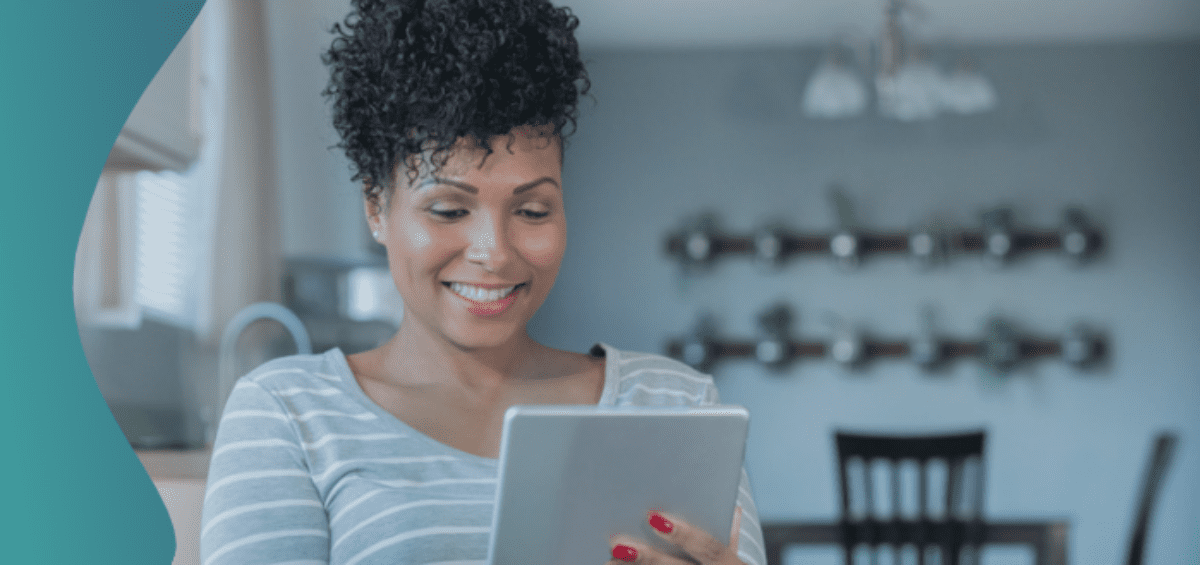March 1, 2021
MyChart is a secure online portal for patients to connect with their health care providers. During the COVID-19 pandemic it has made it easier to schedule appointments, share lab results or quarantine instructions, and conduct virtual video visits—ensuring that the essential health care services that community-based providers offer are available when patients needed them most.
Connecting with Patients through MyChart
At Prism Health, a federally qualified health center look-alike that specializes in providing compassionate health care to LGBTQIA+ patients and many others in Portland, Oregon, an exceptionally high rate of MyChart adoption has helped the clinic stay open and connected to its patients during the pandemic.
Across the OCHIN network, the number of in-person patient visits declined substantially in early 2020 due to COVID-19 restrictions. This new reality forced many community-based providers, like Prism Health, to rely on MyChart and other virtual care tools more than ever before.
In the past year, telehealth visits across the OCHIN network have risen from about 14% (in March 2020) to nearly 34% currently—and more than half of all behavioral health visits in the network are now completed virtually—in a common effort to meet patients wherever they feel is most safe and convenient.
Today, Prism Health conducts more than half of its medical appointments and all of its behavioral health care visits via telehealth.
“From the beginning, all the members of the team were committed to getting people signed up for MyChart,” said Chris Altavilla, who joined Prism Health as its director of health care operations in March 2020, just as COVID-19 emerged in Oregon. “Having an active MyChart is important. If you’re not a user of MyChart, then you can’t go through the process of doing telehealth.”
At Prism Health, more than 94% of patients are activated with a MyChart account that clinicians use regularly to communicate, answer questions, and conduct virtual video visits with their patients. That is roughly three times the rate of MyChart activation in the OCHIN network broadly, which has also increased by about 10% (to nearly 31% network wide) since the pandemic began.
Prism Health attributes its successful rate of MyChart enrollment to having a relatively large number of WiFi-connected and tech savvy patients, combined with coordinated and consistent communication about the benefits of the tool across all clinic staff. For example, patients receive timely communications about COVID-19 screening, testing, and vaccine updates through MyChart, and those who don’t want to risk exposure by travelling into the clinic to pay their bills, can easily do so online.
“It’s an easier way to communicate with patients of all ages,” Altavilla said. “People don’t necessarily answer their phones, but they’ll return a MyChart message.”
Adapting to Provide Behavioral Health Care Virtually
One of the most notable applications of virtual care during the pandemic, has been its rapid deployment in service of behavioral health.
The U.S. has seen a surge in demand for mental health support and behavioral care. According to the U.S. Census Bureau, the percentage of people reporting symptoms of anxiety or depression has jumped to more than 42%—up from 11% the previous year. The Centers for Disease Control and Prevention (CDC) has also reported an increase in fatal drug overdoses as COVID-19 collides with the nation’s ongoing opioid crisis, underscoring the importance of continuous care and treatment for the roughly 25 million patients who were in recovery for a Substance Use Disorder (SUD) prior to the pandemic.
Like many providers nationally, Prism Health’s clinicians have seen an uptick in the need for behavioral health support during the pandemic, and they use MyChart to coordinate referrals efficiently between the organization’s primary care providers and its behavioral specialists.
MyChart’s virtual video visit capability also allows providers to more fully assess the safety of a patient’s home environment or observe non-verbal cues about their overall mental and emotional wellbeing. Through the online portal, patients have more access to their own e-health information and can reach out directly to their providers when they are in crisis or need additional support.
“We’re fully booked with a significant waitlist because there’s just a great need,” Altavilla said. “It’s been really fulfilling for the team to help people navigate care through the pandemic virtually. People just want or need somebody to talk to, too. They’re happy to have those conversations and spend more time with the providers on telehealth because it’s a connection to the world.”













